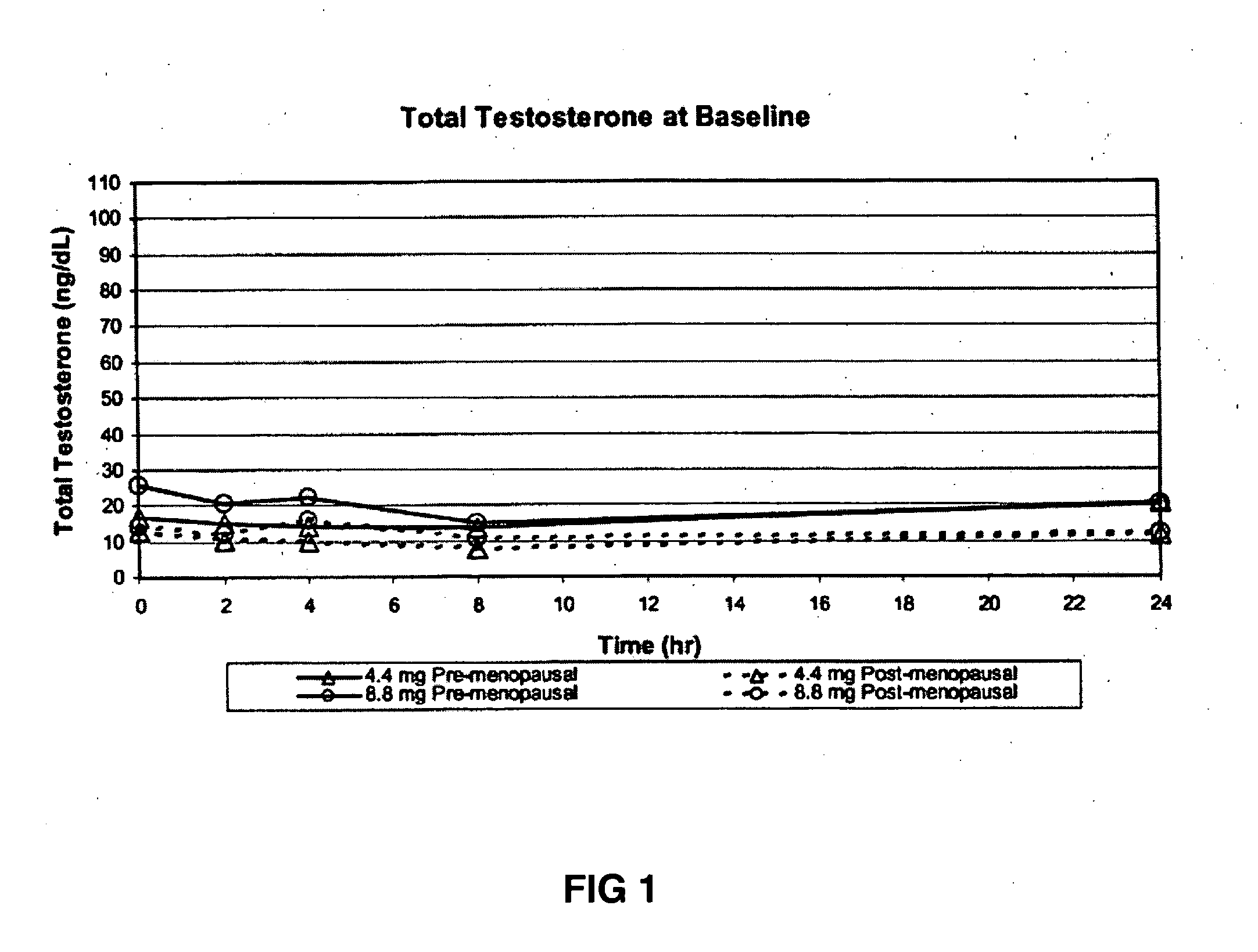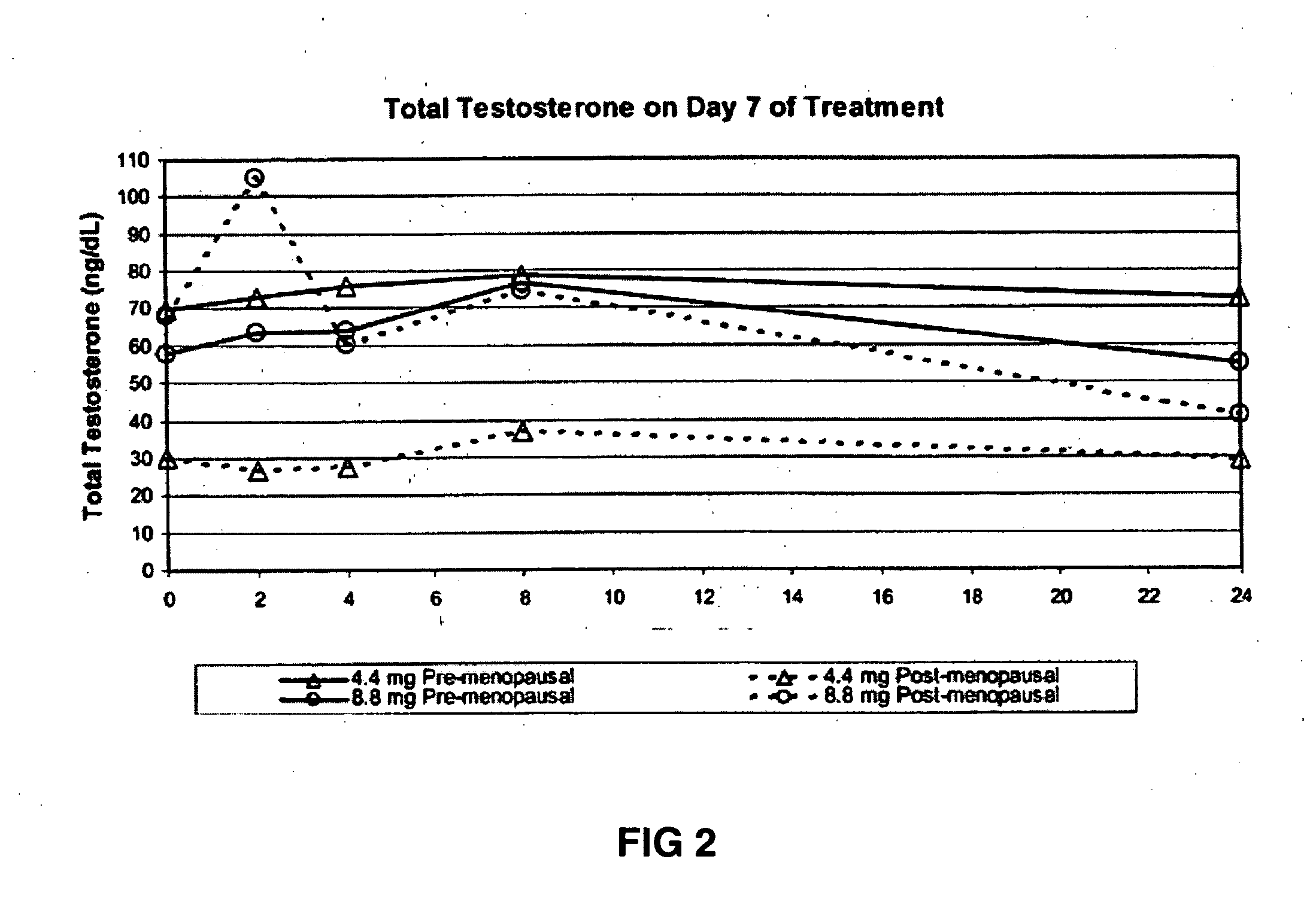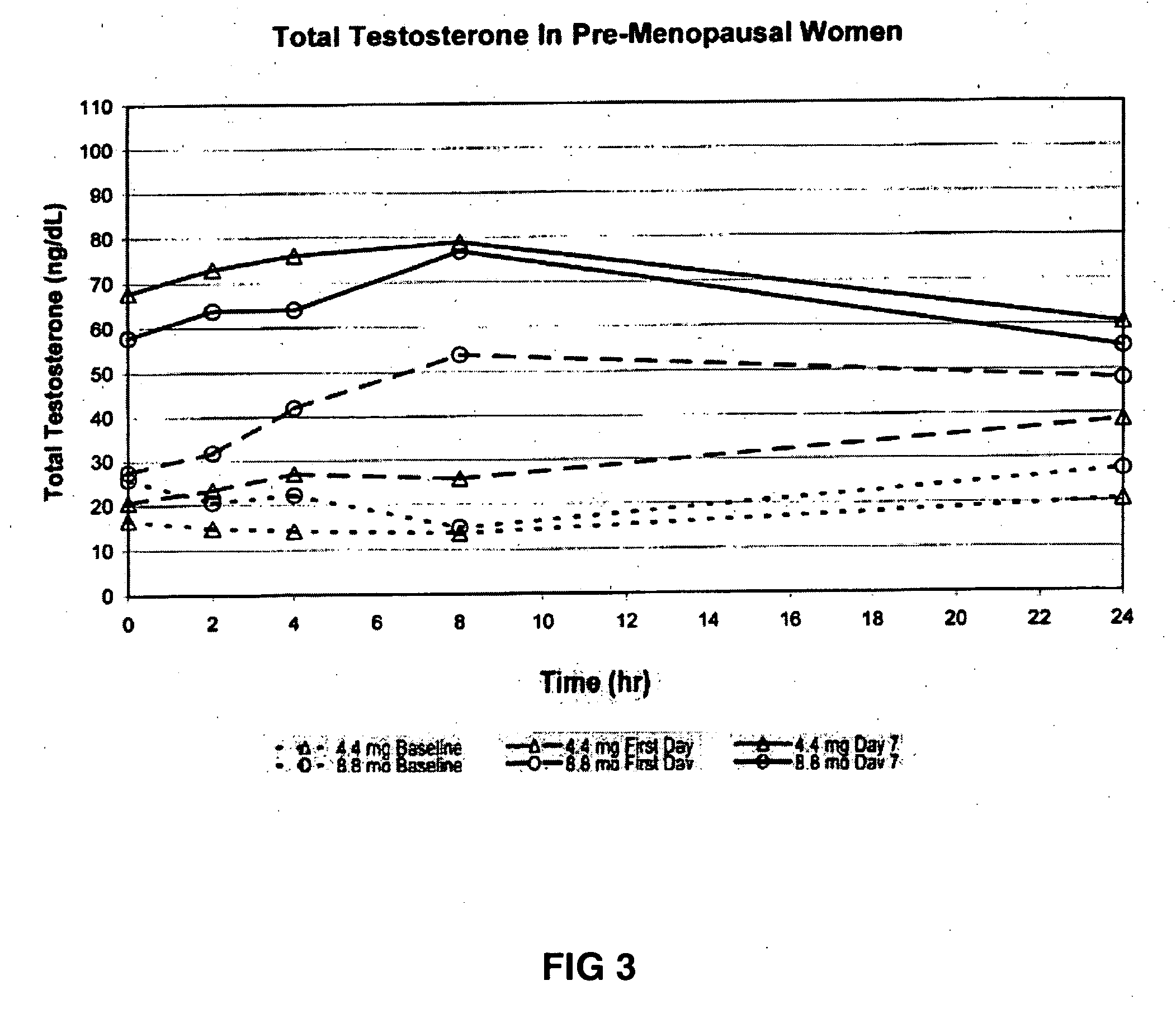Method of increasing testosterone and related steriod concentrations in women
a technology of steriod concentration and testosterone, which is applied in the field of transdermally delivering an effective amount of testosterone, can solve the problems of no general consensus, inability to develop assays capable, and no androgen treatment modalities currently available for women, etc., and achieves the effects of improving bioavailability, chemical stability, physical stability, and safety
- Summary
- Abstract
- Description
- Claims
- Application Information
AI Technical Summary
Benefits of technology
Problems solved by technology
Method used
Image
Examples
example 1
Increase in Testosterone Concentrations in Premenopausal Women with Below-Normal Testosterone Concentrations after Administration of 4.4 mg of Testosterone in a 1% Gel Formulation
[0179] This example demonstrates the increase in serum testosterone levels after the application of 4.4 mg of transdermal testosterone as a 1% hydroalcoholic gel in premenopausal women with below-normal free testosterone concentrations.
[0180] In this example, five premenopausal women between the ages of 18 and 65 years old were enrolled in the study. The subjects were identified as having below-normal free (unbound) testosterone concentrations for their age, with free (unbound) testosterone concentrations at screening ranging from 0.2-0.5 ng / dL. In addition, the subjects could not have received testosterone therapy within 30 days of screening, be pregnant or lactating, be diabetic, or be receiving any anti-depressant therapy.
[0181] The women received 0.44 g of a 1% testosterone gel formulation once daily...
example 2
Increase in Testosterone Concentrations in Premenopausal Women with Below-Normal Testosterone Concentrations after Administration of 8.8 mg of Testosterone in a 1% Hydroalcoholic Gel Formulation
[0195] This example demonstrates the increase in serum testosterone levels after the application of 8.8 mg of transdermal testosterone as a 1% hydroalcoholic gel in premenopausal women with below-normal free testosterone concentrations.
[0196] In this example, five premenopausal women between the ages of 18 and 65 years old were enrolled in the study as above. The women received 0.88 g of a 1% testosterone gel formulation (containing 8.8 mg of testosterone) once daily for seven days. With the exception of the amount of testosterone administered to the subjects, all aspects of the study were identical to those described in Example 1.
[0197] Topical application of 8.8 mg of testosterone-containing hydroalcoholic gel raised the serum testosterone levels of premenopausal women with below-normal ...
example 3
Increase in Free Testosterone Concentrations in Postmenopausal Women with Below-Normal Free Testosterone Concentrations after Administration of 4.4 mg of Testosterone in a 1% Hydroalcoholic Gel Formulation
[0207] This example demonstrates the increase in serum testosterone levels after the application of 4.4 mg of transdermal testosterone as a 1% hydroalcoholic gel in postmenopausal women with below-normal free testosterone concentrations.
[0208] In this example, four postmenopausal women between the ages of 18 and 65 years old were enrolled in the study. The subjects were identified as having below-normal free (unbound) testosterone concentrations for their age, with free (unbound) testosterone concentrations at screening ranging from 0.2-0.5 ng / dL. The women received 0.44 g of a 1% testosterone gel formulation (containing 4.4 mg of testosterone) once daily for seven days. All aspects of the study were identical to those described in Example 1.
[0209] Topical application of 4.4 mg ...
PUM
 Login to View More
Login to View More Abstract
Description
Claims
Application Information
 Login to View More
Login to View More - R&D
- Intellectual Property
- Life Sciences
- Materials
- Tech Scout
- Unparalleled Data Quality
- Higher Quality Content
- 60% Fewer Hallucinations
Browse by: Latest US Patents, China's latest patents, Technical Efficacy Thesaurus, Application Domain, Technology Topic, Popular Technical Reports.
© 2025 PatSnap. All rights reserved.Legal|Privacy policy|Modern Slavery Act Transparency Statement|Sitemap|About US| Contact US: help@patsnap.com



